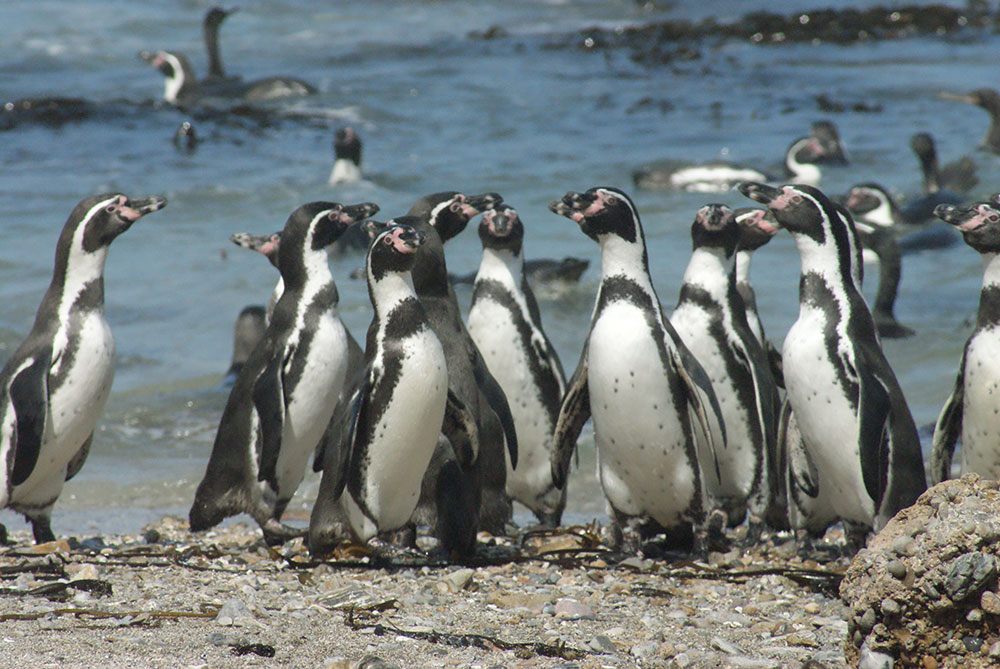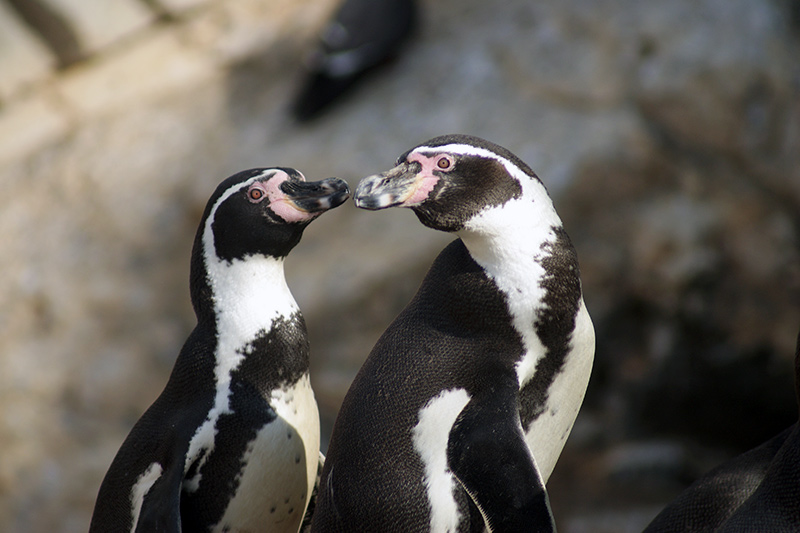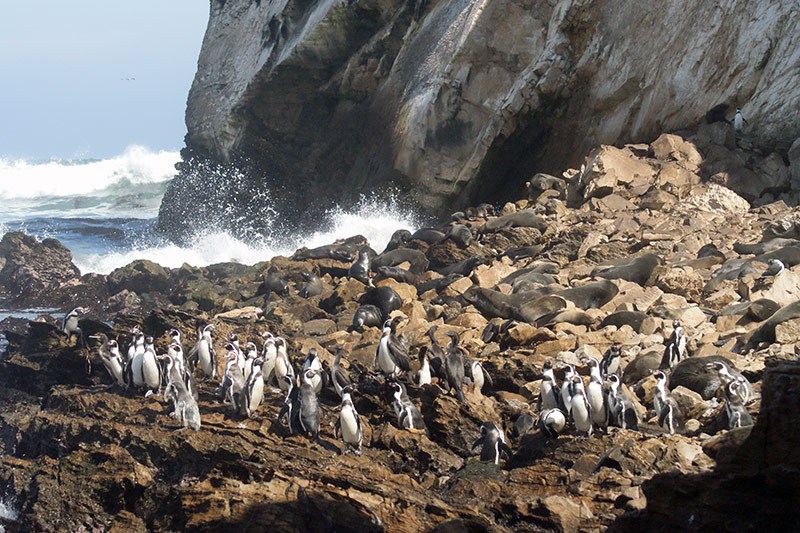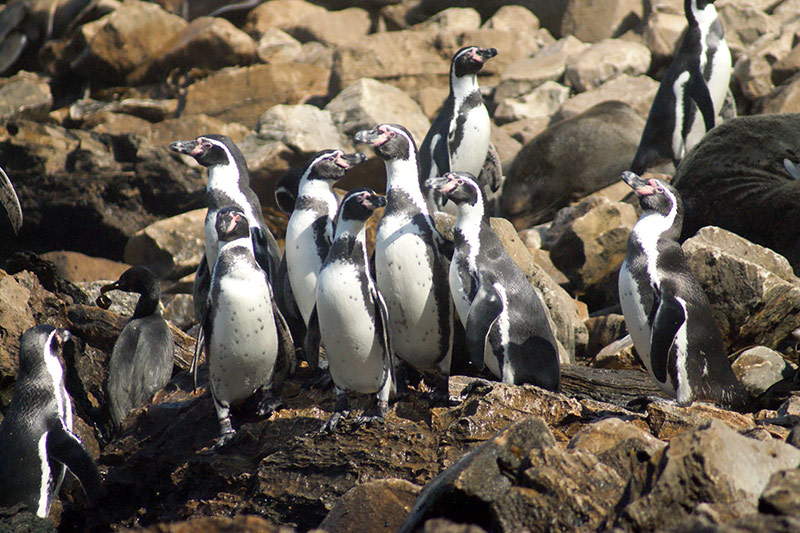Humboldt Penguin Conservation
In Punta San Juan, Peru
PROTECTING PENGUINS
A Sea Change for Penguins
It is estimated that there are approximately 30,000 Humboldt penguins left on the planet. Unlike the Antarctic species most people are familiar with, these birds are only found along the rugged Pacific coasts of Peru and Chile. Their survival is tied to two things that provide shelter and food: guano and the nutrient-rich Humboldt current.
Humboldt penguins dig through guano—accumulated sea bird droppings—to build their burrows and raise chicks. Without it, they would have no nesting material. But it’s also used by people as an agricultural fertilizer, and the over harvesting of guano is a major threat to penguin habitat.
As for food, the cold Humboldt current, which flows north along the western coast of South America, provides a rich supply of anchovies and sardines—the primary diet of these birds. Periodically the upwelling that drives the system's productivity is disrupted by El Niño, a warming phase of the sea temperature “that happens every few years (but is becoming more frequent and more severe with climate change). Warmer waters cannot support the fish that penguins need and the birds are forced to swim further out to sea where they compete with the fishing industry in search of food in cooler water.
PARTNER SPOTLIGHT
Humboldt Penguin Conservation in Punta San Juan, Peru
A Woodland Park Zoo Conservation Partner
Woodland Park Zoo is proud to support Punta San Juan, a marine reserve in southern Peru, which is successfully taking on these challenges to secure a future for Humboldt penguins and all the species that share its ecosystem. Approximately half the entire Humboldt penguin population in Peru calls Punta San Juan home. It is one of the ten most important breeding sites for other birds like cormorants, terns, pelicans and boobies and is home to large populations of South American fur seals and sea lions, too.
Good News for Penguins

Protecting Habitat
The conservation program in Punta San Juan oversees the 133-acre breeding area’s transition from an unsustainable guano harvesting site into a protected marine reserve.

Educating Communities
Punta San Juan uses education to engage local communities and understand their needs. This helps to win support for and create positive feeling for conservation.

Providing Safety
Punta San Juan is now surrounded by a protective wall which keeps predators out and helps to avoid disturbing nesting seabirds. Another safeguard is the presence of park rangers to control and monitor the site, guarding all that lies within its maritime boundaries

Conducting Research
Rangers and biologists conduct ongoing research into the health of the penguin population, its reproductive success and the sustainability of the ecosystem that supports it. The data they collect allows them to make science-based recommendations for government policies and long-term protections for wildlife.
WHAT YOU CAN DO
Choose Sustainable Seafood
You can make sustainable seafood choices when you dine to support healthier oceans for penguins. Use the Seafood Watch guide to see food differently.
Download the sustainable seafood guide
Learn More About Humboldt Penguins
Humboldt penguins are one of the four species of “banded” penguins—so called for the horseshoe shaped black band or stripe that runs around the front of their bodies and across their chest. They are medium-sized penguins, growing around 13-18 inches tall and weighing between 8-12 pounds at adulthood.
They may not be able to fly through the air, but like all penguins, Humboldts use their powerful flippers and streamlined bodies, aided by their webbed feet to soar through the water. Their nearest relatives are the three other banded penguin species, all of which are adapted to life in more temperate regions as opposed to an Antarctic climate: the African penguin, the Magellanic penguin and the Galápagos penguin.
Humboldt penguins are currently listed as a Threatened Species, vulnerable to extinction unless there is an improvement to the circumstances threatening their survival.
MORE WAYS TO HELP